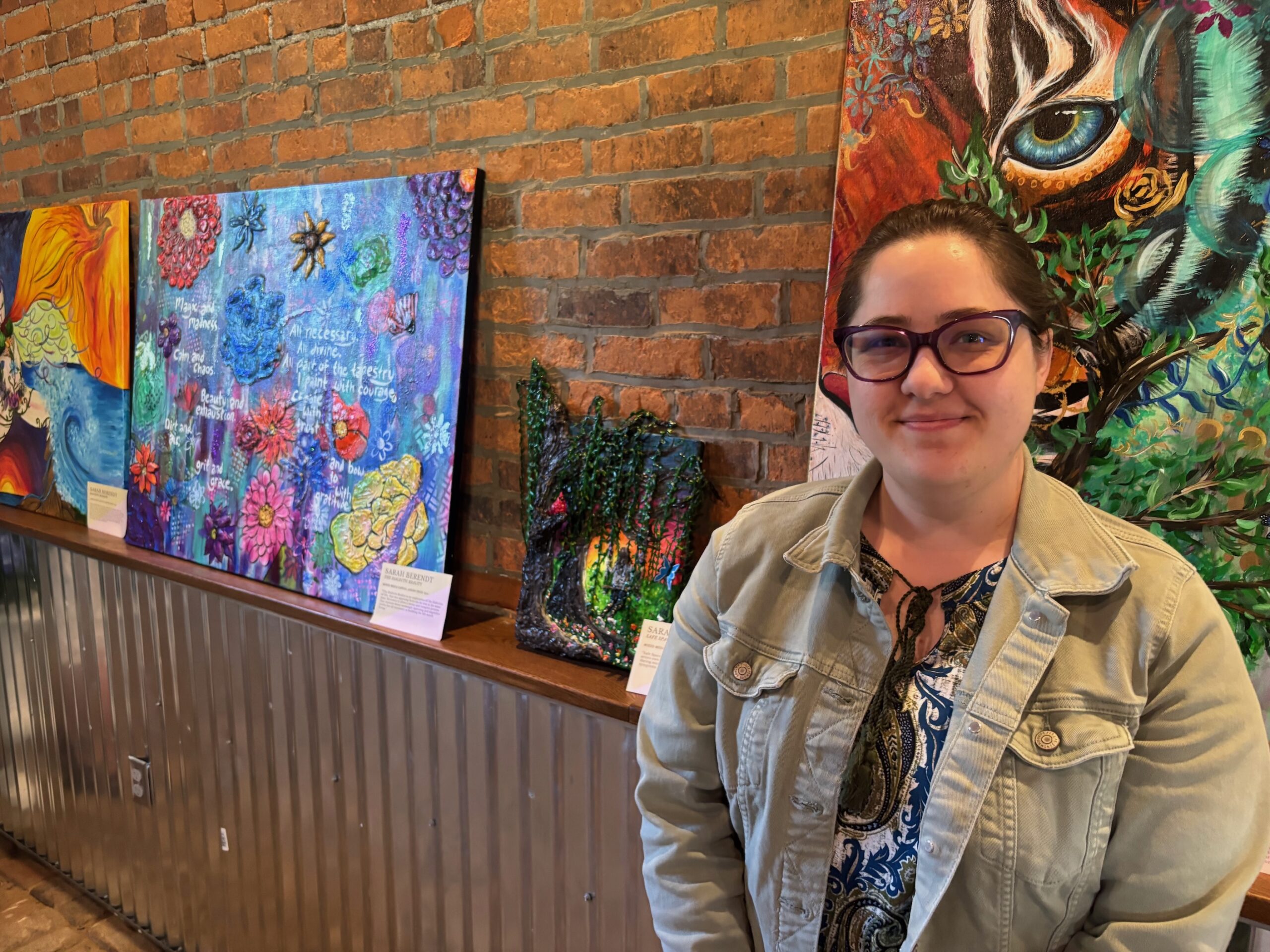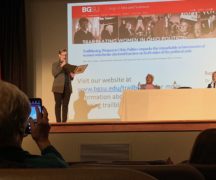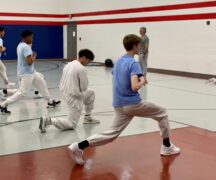By JULIE CARLE
BG Independent News
What does resilience in behavioral health look like?
It’s a photograph of a water drop on a plant stalk that embodies how perspective is a vital component of mental health and recovery.
Or a cat-like mask depicting an artist’s recognition that sometimes it is important to explore your mental health instead of hiding from it or screaming at it.
It could be a hand-drawn ripple on a pond exemplifying a statement of an artist in recovery who learned that even small changes can have a significant impact.
The 110 pieces of artwork by 60 area artists at the 2025 Resilience Through Art Behavioral Health Art Show exhibited the spectrum of emotions that are part of a mental health journey in various media.
The artists’ vulnerability, courage and strength were displayed on canvas, behind frames and on easels. Each artist’s work was a testament to the healing power of self-expression.
This year’s show at the Wood County Museum more than tripled the number of art pieces compared to last year, according to Marketing and Communication Manager Kaylee Smith from the Wood County Alcohol, Drug Addiction and Mental Health Services, the art show sponsor.
Some of the artists were independent, and others were from area art therapy programs at local mental health providers, such as the Expressive Art Studio at OhioGuidestone in Perrysburg.
They offered a collage station for visitors to enjoy the experience of being part of a collaborative art project. They were asked to combine inspirational words and tissue paper to add to a butterfly art piece. They also offered a collage-creating station.
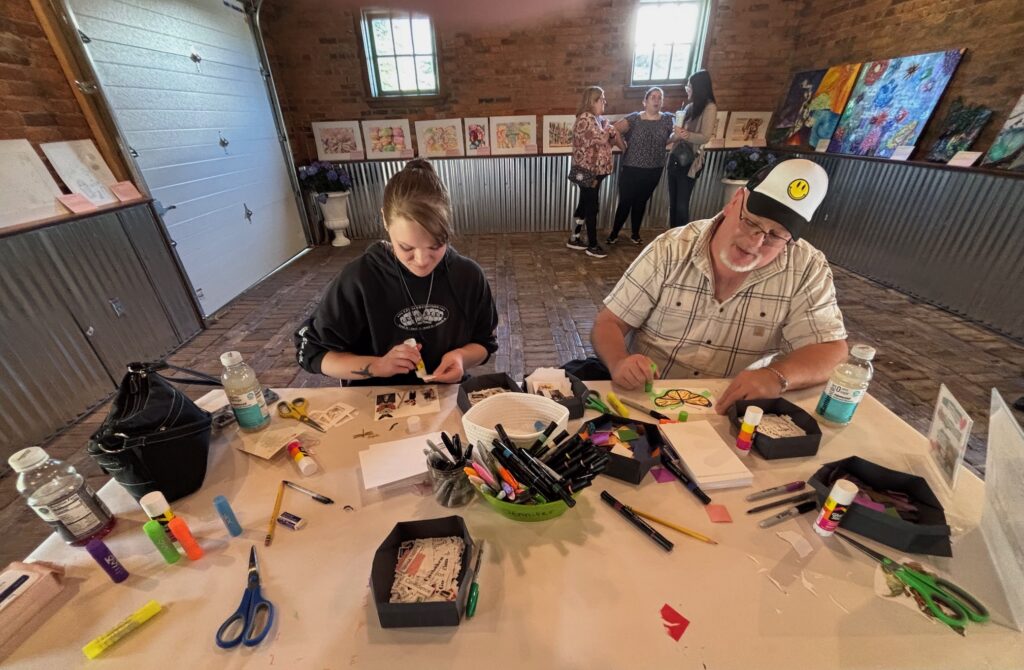
Erin Lowe, who was working on a collage, attended the show to support her father, Brian, who works as a recovery coach in the field of mental health and recovery.
He displayed some of his graphite artwork in the show. He also knew some of the other artists through his recovery coaching work, which he loves. He was impressed to see the scope of work that covered the gamut of behavioral health journeys from before diagnosis or early onset of symptoms through recovery and hopefulness for the future.
When Kelleigh Bossa kept painting the walls in her house different colors, her therapist suggested she try something smaller. She started painting in watercolor, transitioned to acrylic and now creates in any medium she gets her hands on.
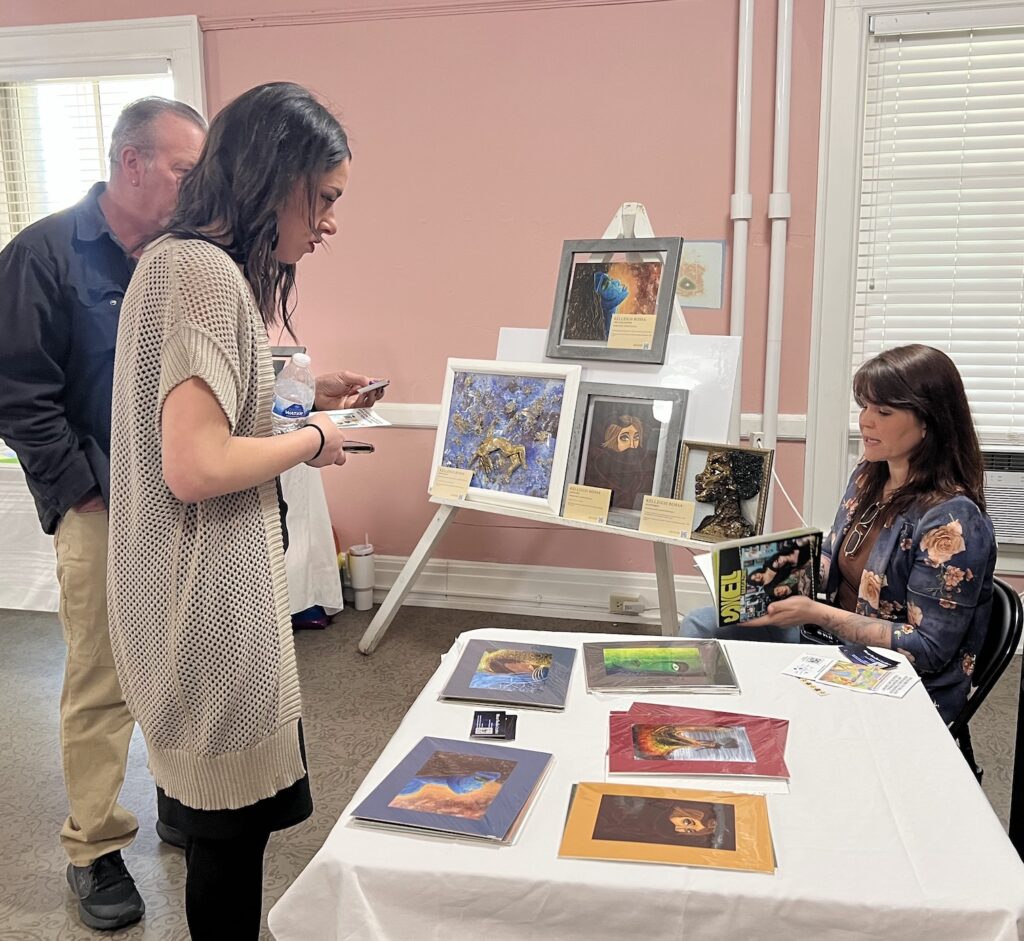
She called her art “definitely therapy for me” to deal with anxiety and control issues stemming from Childhood Post Traumatic Stress Disorder, “that we’re never meant to have.”
Bossa has benefited not only from creating the art, but also from seeing others appreciate her work and “feel what I was feeling when I did that,” she said.
“I had no idea I could do any of this. I kind of discovered it and now I play and have fun,” Bossa said. Some of her latest creations came after she helped a friend deal with some traumatic issues by breaking a bunch of glass to blow off steam. “Then I had all this glass and because I don’t like to waste, I figured out how to turn it into art,” she said.
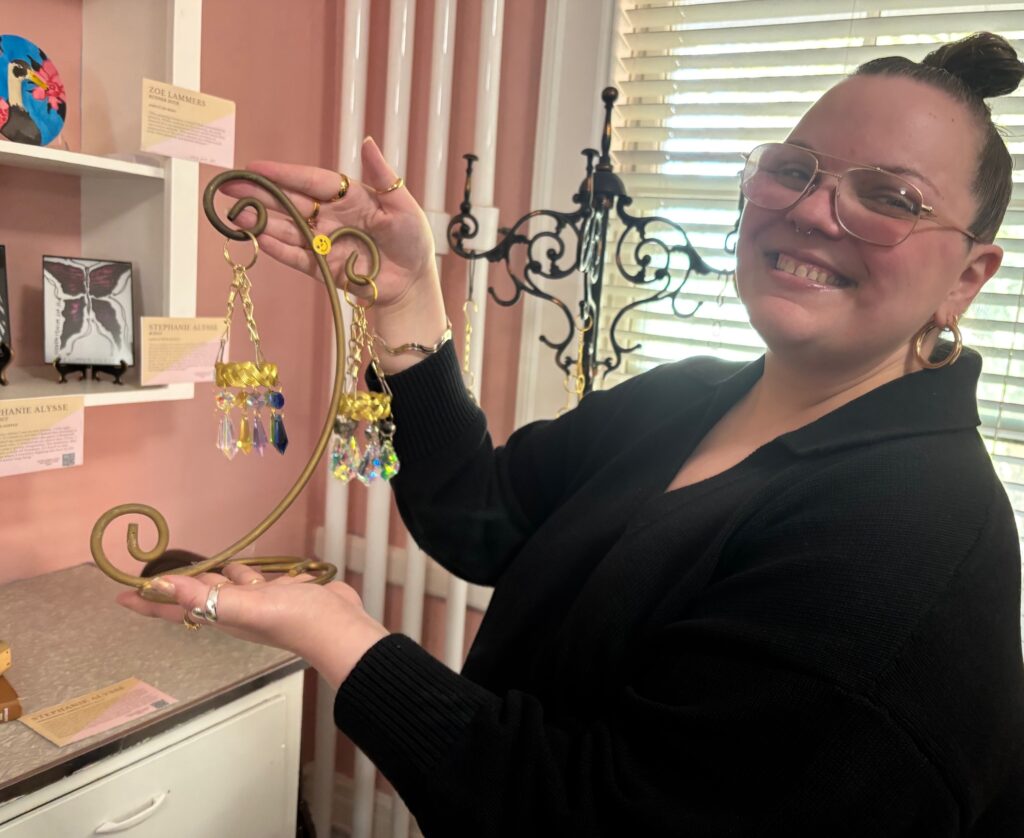
Stephanie Alysse has had a fascination with drawing eyes and has ever since she was young. Only in a recent art therapy session, to work through issues from childhood and adult trauma, Alysse learned that there is a connection between that type of abuse and drawing eyeballs. “It all made so much sense,” she said.
Through addiction, an eating disorder, recovery and mental health, “Art has always been like my blanket, my saving grace,” she said.
In addition to her drawings and paintings, she inadvertently discovered a new medium of choice, 3-D crystal sculptures. She had ordered a bunch of clear crystals but didn’t know what to do with them once she received them. She walked through the Dollar Tree to find other items she could pair with the crystals. Her creativity turned the crystals, key rings, napkin rings, and other kitchen items into a prism-creating piece of art.
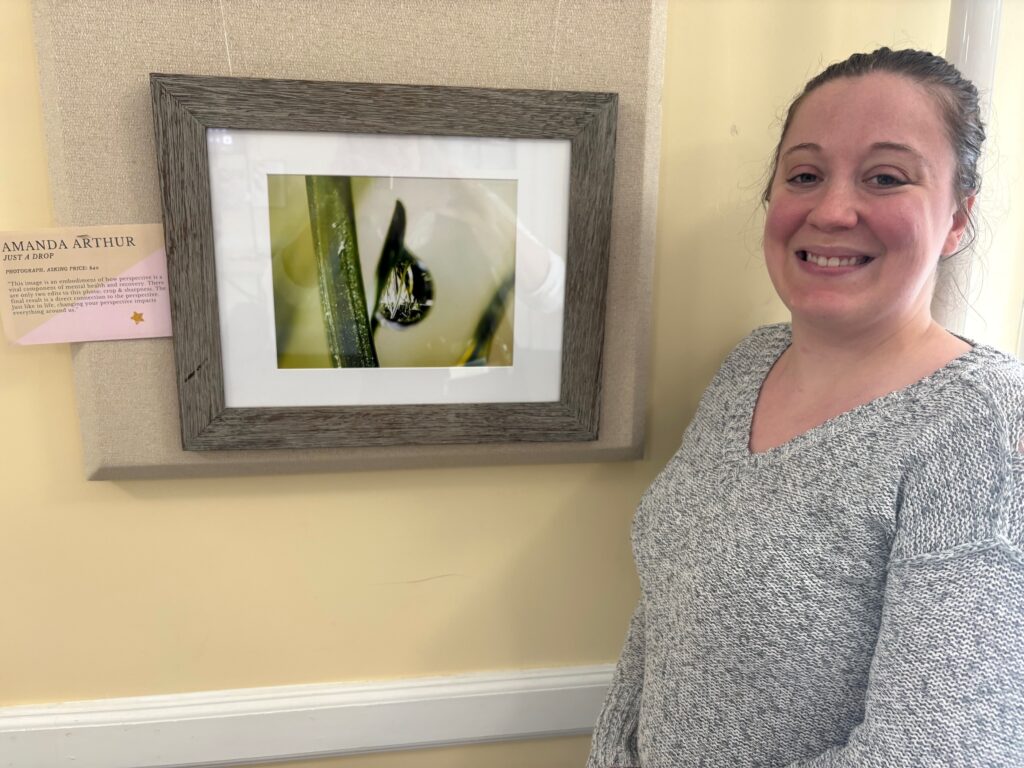
Amanda Arthur grew up with a disability that left her feeling isolated. Photography for her “is one place where I could feel normal,” she said. “When I take a picture or if I’m in a picture, nobody can tell I’m not the same as them. That makes it feel inclusive.”
The photograph she displayed at the art show was one of a series taken underneath the deck steps at her parents’ house. Each of the three photographs is of the same object taken from different perspectives—first from the furthest away and the third, a zoomed-in look at the drop of water with a cool reflection within the droplet.
“It really speaks to me about the perspective of life and the things that are there that you don’t see,” she explained.
As the organizer for the art show, Smith said, “It’s important for us as people and as a board to be able to interact with our clients, hear their stories to give them space to talk about their recovery journey, which looks different for everybody. It’s important to be a platform. We rent the room, and everything else is about the artists,” she said. “I want them to know how grateful we are to hold their stories and their pieces.”

